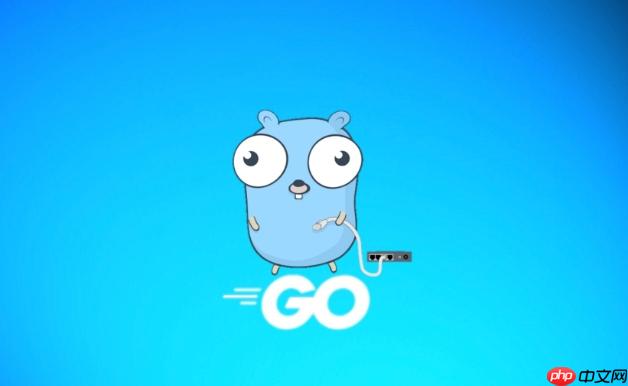答案:使用Golang的goroutine和channel实现并发任务队列,通过Task结构体封装任务,利用worker池从channel中并发消费任务,实现解耦与削峰填谷。

在高并发场景下,任务队列是解耦和削峰填谷的重要手段。Golang 凭借其轻量级的 goroutine 和强大的 channel 机制,非常适合实现高效的任务队列并发消费模型。下面通过一个实战示例,展示如何用 Golang 构建一个可扩展、可控、安全的并发任务消费者。
我们要实现的是:多个 worker 并发从任务队列中取任务执行,任务来源可以是外部请求或定时生成。核心组件包括:
注意:这里使用 Go 的 channel 作为队列载体,天然支持并发安全。
每个任务可以封装成一个结构体,包含数据和处理逻辑:
立即学习“go语言免费学习笔记(深入)”;
type Task struct {
ID string
Data interface{}
Fn func() error // 实际执行的函数
}
<p>func (t *Task) Execute() error {
return t.Fn()
}
也可以简化为只传函数,适用于轻量任务:
type Task func() error
启动固定数量的 worker,每个 worker 持续监听任务通道:
func StartWorkerPool(numWorkers int, taskQueue <-chan Task) {
var wg sync.WaitGroup
<pre class="brush:php;toolbar:false;"><pre class="brush:php;toolbar:false;">for i := 0; i < numWorkers; i++ {
wg.Add(1)
go func(workerID int) {
defer wg.Done()
for task := range taskQueue {
if err := task.Execute(); err != nil {
log.Printf("Worker %d failed to execute task: %v", workerID, err)
} else {
log.Printf("Worker %d completed task", workerID)
}
}
}(i)
}
// 等待所有 worker 结束(通常主程序不会退出)
go func() {
wg.Wait()
close(taskQueue) // 可选:任务结束时关闭
}()}
通过一个输入通道接收外部任务,并写入任务队列:
func DispatchTasks(taskQueue chan<- Task, tasks []Task) {
for _, task := range tasks {
select {
case taskQueue <- task:
// 成功发送
default:
log.Println("Task queue is full, dropping task")
// 可做降级处理:持久化、拒绝等
}
}
}
使用带缓冲的 channel 防止阻塞:
taskQueue := make(chan Task, 100) // 缓冲 100 个任务 StartWorkerPool(5, taskQueue) // 启动 5 个 worker
假设我们需要异步发送邮件,避免阻塞主流程:
func sendEmail(to, subject string) Task {
return func() error {
time.Sleep(time.Second) // 模拟网络请求
log.Printf("Email sent to %s with subject '%s'", to, subject)
return nil
}
}
<p>// 主函数调用
func main() {
taskQueue := make(chan Task, 100)
StartWorkerPool(3, taskQueue)</p><pre class="brush:php;toolbar:false;"><pre class="brush:php;toolbar:false;">// 模拟外部请求不断提交任务
go func() {
for i := 0; i < 10; i++ {
task := sendEmail(fmt.Sprintf("user%d@example.com", i), "Welcome!")
select {
case taskQueue <- task:
default:
log.Println("Queue full, skip sending email")
}
time.Sleep(100 * time.Millisecond)
}
}()
// 防止主程序退出
time.Sleep(5 * time.Second)}
例如使用 context 改造 worker:
func StartWorkerWithContext(ctx context.Context, workerID int, taskQueue <-chan Task) {
for {
select {
case <-ctx.Done():
log.Printf("Worker %d shutting down...", workerID)
return
case task, ok := <-taskQueue:
if !ok {
return
}
task.Execute()
}
}
}
基本上就这些。Golang 的并发模型让任务队列实现变得简洁而强大。合理利用 channel 和 goroutine,就能快速构建出高性能的并发消费系统。关键是控制好资源、处理好边界情况,才能在生产环境稳定运行。
以上就是如何用 Golang 实现任务队列并发消费_Golang 并发任务模型项目实战的详细内容,更多请关注php中文网其它相关文章!

每个人都需要一台速度更快、更稳定的 PC。随着时间的推移,垃圾文件、旧注册表数据和不必要的后台进程会占用资源并降低性能。幸运的是,许多工具可以让 Windows 保持平稳运行。

Copyright 2014-2025 https://www.php.cn/ All Rights Reserved | php.cn | 湘ICP备2023035733号